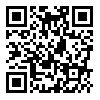Volume 14, Issue 3 (8-2022)
jorar 2022, 14(3): 192-210 |
Back to browse issues page
Download citation:
BibTeX | RIS | EndNote | Medlars | ProCite | Reference Manager | RefWorks
Send citation to:



BibTeX | RIS | EndNote | Medlars | ProCite | Reference Manager | RefWorks
Send citation to:
Talaie H, Hajian M. Assessing the Level of Trust in the Humanitarian Supply Chain
(Case Study: the Fire-induced Collapse of Plasco Building, Shahran Gas Explosion, & Flash Flood in Tehran Subway). jorar 2022; 14 (3) :192-210
URL: http://jorar.ir/article-1-831-en.html
URL: http://jorar.ir/article-1-831-en.html
Department of Industrial Management, Faculty of Administrative and Economic Sciences, Arak University, Arak, Iran
Abstract: (1642 Views)
INTRODUCTION: The present study aimed to investigate communication, information exchange, cooperation, and trust networks in Iran's Humanitarian Supply Chain at both inter-organizational and interpersonal levels.
METHODS: This applied research was conducted based on a descriptive survey design. The statistical population of this research included the organizations and people involved in relief operations performed in three recent disasters: the fire-induced collapse of the Plasco building, Shahran gas explosion, and the flash flood in the Tehran subway. In order to analyze networks, a questionnaire containing network analysis questions was designed. Upon the completion of the questionnaires, the data of each network were entered systematically into a matrix on an excel spreadsheet. Such indexes as degree centrality, betweenness centrality, intersection points, isolation points, and network density were calculated by Ucinet and NetDraw software packages; therefore, the networks were analyzed.
FINDINGS: Based on the results obtained from the analysis of communication, information exchange, and cooperation networks, the network density was 21%, indicating a low level of organizational relationship. At this level of communication, information exchange and cooperation were obtained at 11.5% and 16.5%, respectively. The analysis of the trust network also illustrated that the density of this network was 26.6%, suggesting that out of 21% of connections, there was about a quarter of possible trust. This is suggestive of low levels of inter-organizational Trust.
CONCLUSION: Building trust in Iran's humanitarian service supply chain can be very effective in the acceleration of service supply, organization, and success of relief operations
METHODS: This applied research was conducted based on a descriptive survey design. The statistical population of this research included the organizations and people involved in relief operations performed in three recent disasters: the fire-induced collapse of the Plasco building, Shahran gas explosion, and the flash flood in the Tehran subway. In order to analyze networks, a questionnaire containing network analysis questions was designed. Upon the completion of the questionnaires, the data of each network were entered systematically into a matrix on an excel spreadsheet. Such indexes as degree centrality, betweenness centrality, intersection points, isolation points, and network density were calculated by Ucinet and NetDraw software packages; therefore, the networks were analyzed.
FINDINGS: Based on the results obtained from the analysis of communication, information exchange, and cooperation networks, the network density was 21%, indicating a low level of organizational relationship. At this level of communication, information exchange and cooperation were obtained at 11.5% and 16.5%, respectively. The analysis of the trust network also illustrated that the density of this network was 26.6%, suggesting that out of 21% of connections, there was about a quarter of possible trust. This is suggestive of low levels of inter-organizational Trust.
CONCLUSION: Building trust in Iran's humanitarian service supply chain can be very effective in the acceleration of service supply, organization, and success of relief operations
Article Type: Research article |
Subject:
Other matters related to crisis, disasters and rescue & relief
Send email to the article author
| Rights and permissions | |
 |
This work is licensed under a Creative Commons Attribution-NonCommercial 4.0 International License. |







